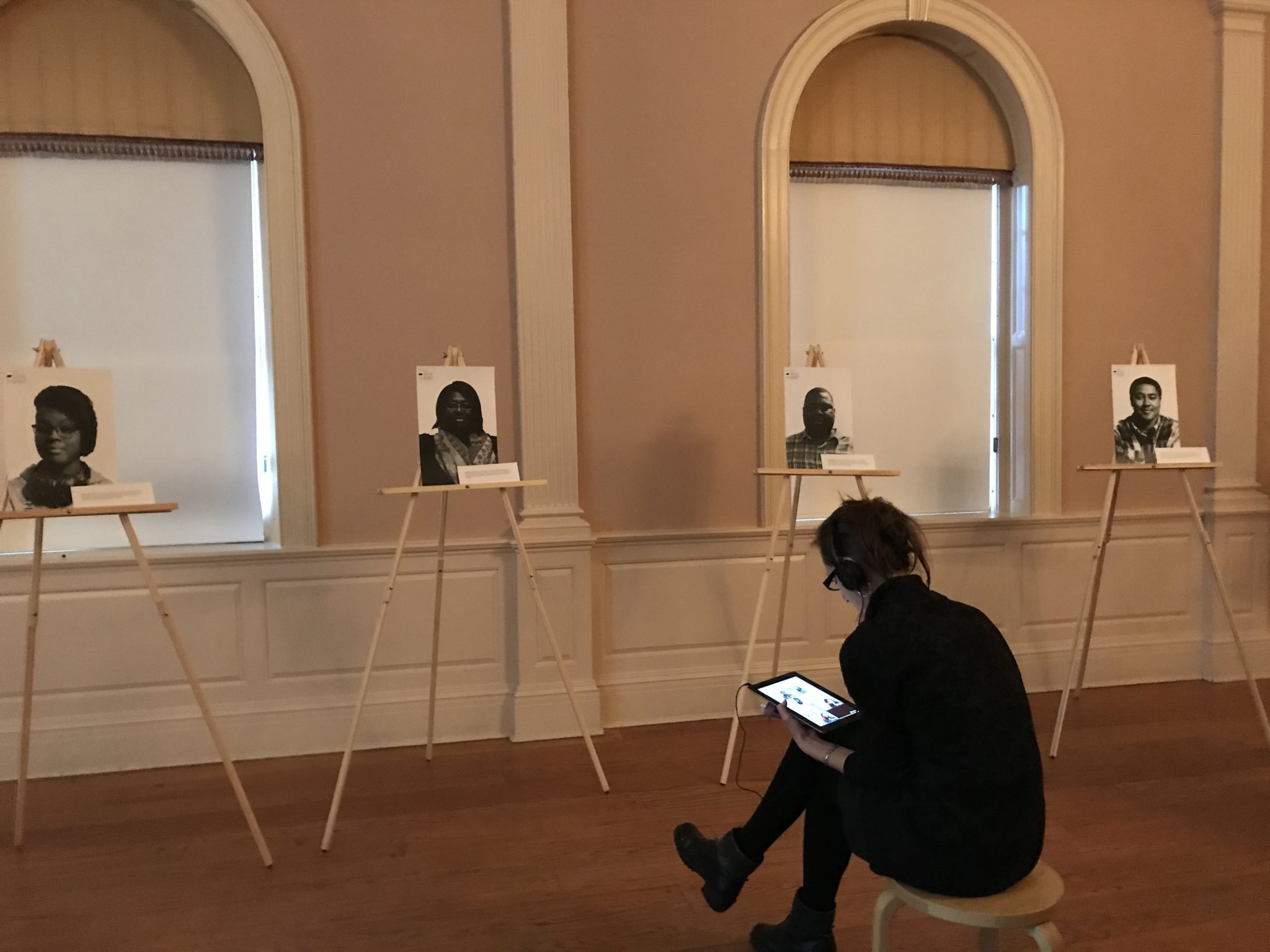
Eleven easels, each displaying a black-and-white portrait, lined the walls of a New Haven Museum room for the opening of The Silence Project. The exhibit showcases the voices of disenfranchised groups in New Haven through audio portraits collected by the students in the Yale seminar “Introduction to Public Humanities.”
Each portrait stood at eye level with the viewer, inviting the viewer to listen to the subject’s story on headphones connected to an iPad. Each visitor was free to sit on a stool facing each portrait while listening to the accompanying video interview.
“We often see folks of color or who were formerly incarcerated or immigrants, and we think that they have no power, that they don’t have a say in government,” Caprice Mendez, a former undocumented immigrant, said in one audiotape. “On the contrary, we may not have systemic power, but we have people power. We have the numbers. Through that, we also have relationships, allies.”
The eleven videos revealed stories of people in New Haven such as former undocumented immigrants, formerly incarcerated people and high school students.
The Silence Project served as the final assignment for a Yale seminar, “Introduction to Public Humanities,” which is taught every fall semester by Ryan Brasseaux, who also serves as dean of Davenport College. The course examines the relationship between knowledge produced in a university and the circulation of ideas among a broader public.
At the end of the course, Brasseaux asks students to create a collaborative project that is not a term paper, but a final project designed to be disseminated and put out into the world — whether an exhibit, an installation or a multimedia project. The project only has only one parameter: It must be about New Haven.
“Politics right now is very tumultuous,” said Anna Milliken ’20. “Very noisy,” added Devyani Aggarwal ’18
So the group decided to base their project on the idea of silence in politics.
Jørn Emborg GRD ’18 said the project aimed to hear what people who are rarely heard have to say.
“We thought about what would it mean to create a reflective space, a quiet space, a silent space, where people could stop, block out the noise and reflect,” Brasseaux said.
The idea of silence also featured in the exhibition of the interviews through the provision of headphones to each visitor. Brasseaux said at one moment, everyone took an iPad, put on their headphones and the room was silent for five minutes.
Tahjee Galberth, a junior at Wilbur Cross High School and a subject of one of the video portraits, attended the exhibit’s opening.
“A lot of other people’s opinions matched mine,” Galberth said. “So I just thought ‘I’m not the only one who thinks this way.’”
While this was a project for a Yale class, the students hoped to get away from what they were familiar with, Aggarwal said.
Izak Epstein ’19 said Yale students rarely interact with the New Haven community, and when there is an interaction, it tends to be “paternal.” Some students ask, “How can we help the community?” rather than, “How can we engage or build relationships with the community?”
That’s why the medium of personal interviews was really important, Milliken added.
“We really wanted it to be … their actual voices, not us telling their story for them,” Milliken said.
Milliken acknowledged the impossibility of completely getting away from Yale, given that the University is the reason the students are in New Haven and did the project.
But from the advertising of the event to the exhibition, the students made sure to involve the New Haven community as much as possible. They invited organizations based in New Haven and chose the off-campus New Haven Museum as the exhibition’s location.
“One thing that we wanted to do was not make the exhibit on Yale’s campus because a lot of things that are hosted at Yale are open to the public, but it doesn’t feel like a real invitation,” Milliken said.
Staff members at the New Haven Museum said they are excited about the collaboration.
“We think it’s important in the museum to talk about our history and our past,” Mary Christ, the collections manager of the New Haven Museum said. “But we also think it’s important to document what is happening right now in our community.”
Sammy Westfall | sammy.westfall@yale.edu







